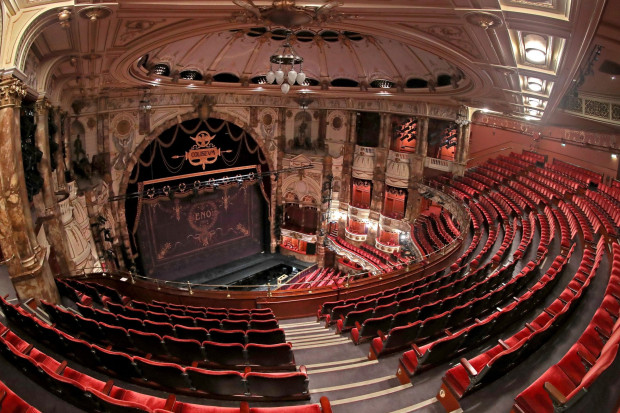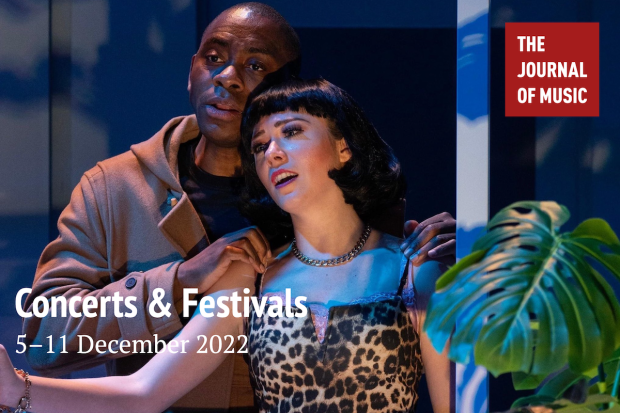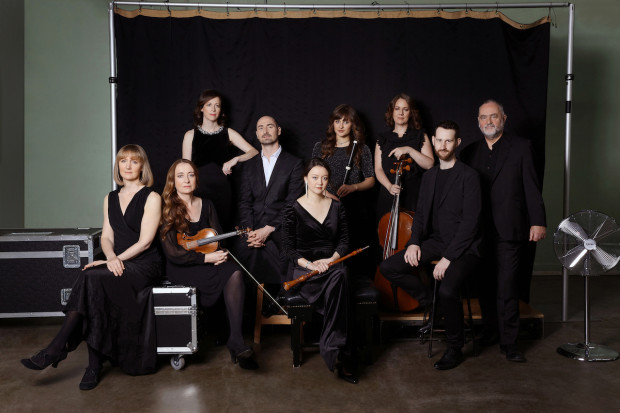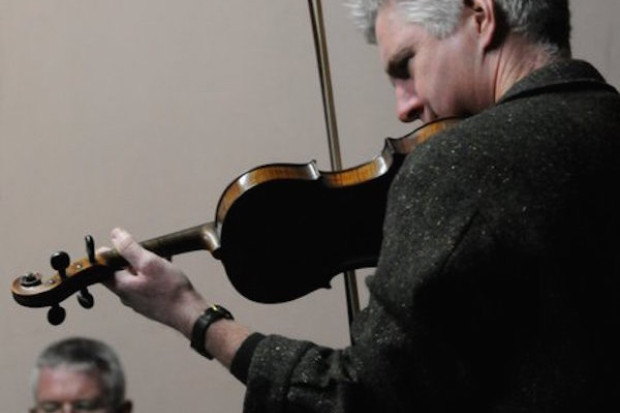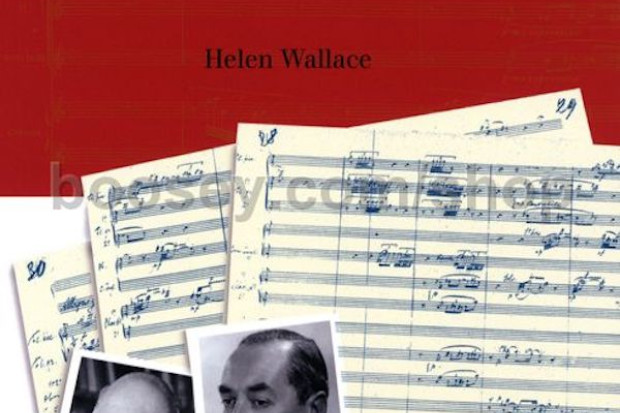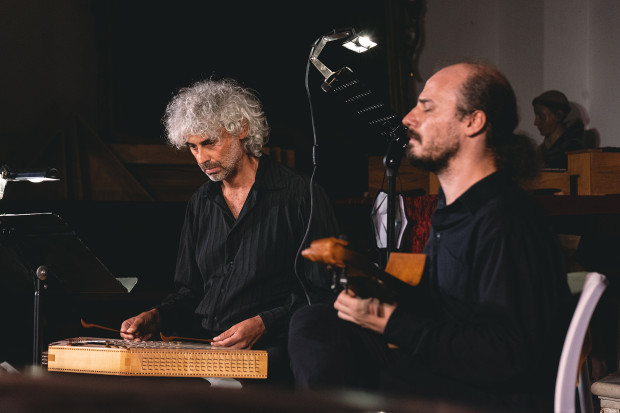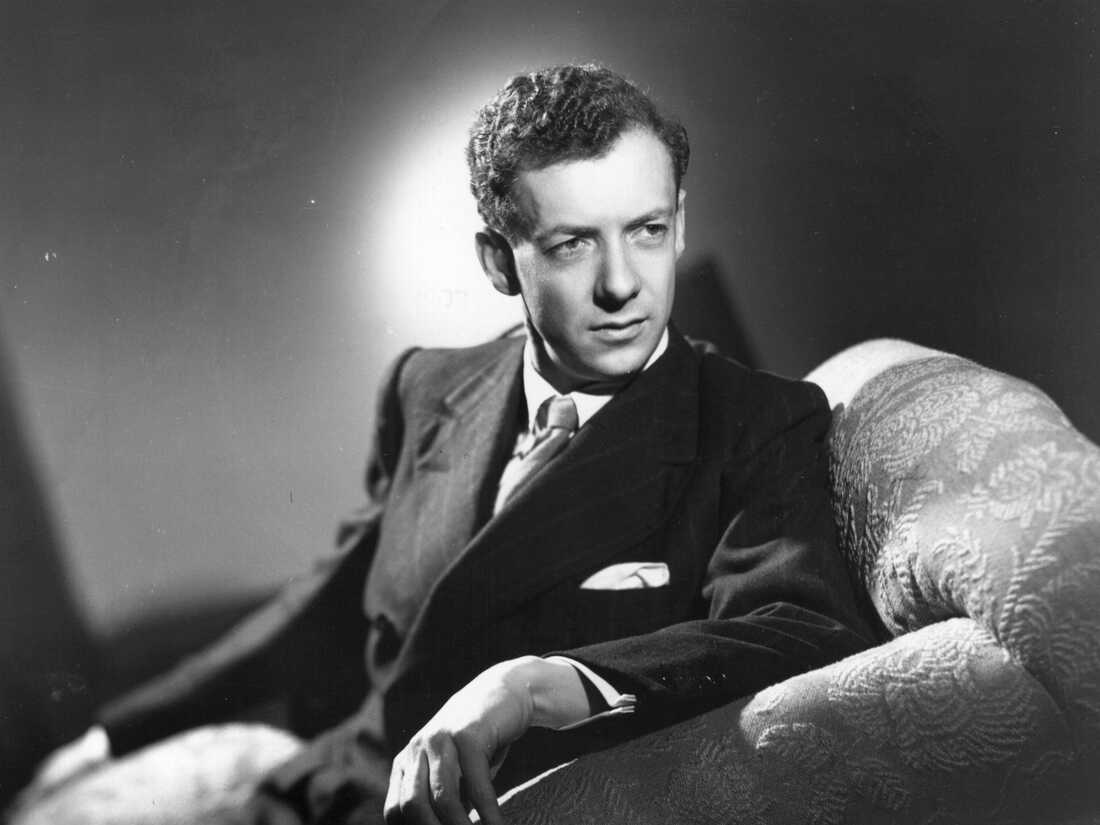
Benjamin Britten in 1948 (Photo: Denis De Marney/Getty Images)
What Ever Happened to Britten in Ireland?
Earlier this year it was announced that the famed British composer Benjamin Britten is to be honoured with a newly commissioned bronze sculpture in his hometown of Lowestoft on the east coast of England. Led by broadcaster Zeb Soanes (coincidentally the former voice of BBC Radio 4’s longstanding Shipping Forecast), it is hoped that the commemorative statue will inspire future generations of young composers to make their mark. Sculpted by the talented Ian Rank-Broadley, it will depict the composer as he was ninety-five years ago – a fourteen-year-old boy gazing out at the wild North Sea, the inspirational basis for a staggeringly successful musical career.
Perhaps if Britten had grown up on the west coast of England, he would have looked out across the Irish Sea to observe the hazy coastline of Ireland, and this country could have had more of an impact on him. It is surprising that Britten expressed virtually no interest in his neighbouring island. Indeed, in the entire six-hundred-and-forty-two pages of Humphrey Carpenter’s famous biography of the composer, the country itself is mentioned once. Alongside his partner Peter Pears and the semi-royal Harewood couple, Britten holidayed here in 1953, and only then because he was refused entry into Greece after condemning their unlawful treatment of prisoners. Indeed, the only tangible ‘Ireland’ in the composer’s life was the English composer John Ireland, who acted as a guiding and authoritative creative force for a young Britten. On balance, perhaps we have the saving grace of Britten’s Folksong Arrangements Vol. 4 ‘Moore’s Irish Melodies’ (1960). These ten songs for voice and piano came later in his creative output, and were a welcome development on Thomas Moore’s rather dated accompaniment style. Yet, in the same manner that Gaelic texts were crudely Anglicised by Moore and others throughout the long nineteenth century, the sound world created here is distinctly Britten-esque, and therefore synthesised pretty far out of Irish reach, it is fair to say.
All being said, a more interesting question revolves around our own reaction to and treatment of Britten’s work on the island of Ireland. It was reassuring to see somewhat of a flurry of activity during the composer’s birth centenary in 2013, but in the nearly ten years since – never mind the one hundred previous – Britten has been in danger of bobbing below the surface. To use BBC Radio 4 lingo, our collective attitude towards performing him could be considered ‘moderate’ – we should ensure it does not become ‘poor’ or ‘occasionally very poor’. He is undoubtedly one of the most stylistically unique composers of the twentieth century – in fact, it is surprisingly difficult to narrow down the constituent influences that inform Britten’s sound world. His approach to literary inspiration and text setting is underpinned by extensive metaphor, coded word painting, and double meaning – the likes of which cannot be matched by Vaughan Williams, Elgar, Holst, or even Tippett. Worthy of most admiration is Britten’s contribution to twentieth-century opera – totalling sixteen (including ‘operettas’ and ‘church parables’), these works are a veritable trove of musicological meaning, and likely represent one of the last significant resurgences of such an art form to originate from Britain since Arne or Handel. It is nearly a decade, however, since his work has been meaningfully discussed in the Irish media (‘Big On Britten’ on RTÉ Lyric FM).
Choosey curation
Has it always been this way? That’s difficult to answer – Ireland’s curation of Britten could be described as choosey, or even picky. Today, it is unquestionably the operas that continue to suffer, and our historical reception to them is rather strange. One opera in particular seemed to captivate the Irish opera scene, seeing at least one fresh production every decade since the 1970s (except for a hiatus in the 90s). This is the ghostly chamber opera The Turn of The Screw. An adaption of a Henry James novella, it was premiered in 1954, and, once Wexford Festival Opera produced it in 1976 under Thomson Smillie, the work latched onto the operatic zeitgeist. It was subsequently produced twice by the Opera Theatre Company, once in 1986 by Ben Barnes – giving the company the best start possible according to leading lady Virginia Kerr – and again in 2004 by Helen Eastman in association with English Touring Opera. Following this, it was produced thrice more, once by DIT Conservatory of Music and Drama in 2013, and twice by NI Opera under Oliver Mears – once in 2012 as a touring production and then revived in 2016.
What is rather curious to consider is why the most recent Britten operas to be produced on this island include such lesser-known and smaller-scale titles as Albert Herring (RIAM, 2013), Noye’s Fludde (NI Opera, 2012; DIT Conservatory of Music and Drama, 2013) and Owen Wingrave (Opera Collective Ireland, 2017). Considering how crucial a ‘bums on seats’ approach is, this programming was risky – for example, Noye’s Fludde is a relatively unknown prototype of the later ‘church parables’, and Owen Wingrave was an experimental ‘television opera’ (it did air in Ireland back in 1971) that has often proved difficult and blocky to translate onto the stage. It is more than likely that these decisions are a combined result of limited budgets, limited time, and a reasonable apprehension of artistic criticism. We should of course be appreciative that such titles have been given some well-deserved attention, yet they simultaneously point to a broader issue of reputation and dissemination. It has too often fallen to smaller companies to give Britten a chance – RIAM, DIT Conservatory, and Opera Collective Ireland are certainly at a noticeable disadvantage when it comes to funding. After all this, one is immediately compelled to ask – where on earth is Peter Grimes? Well, despite being the composer’s most famed operatic work, only one such production has ever graced an Irish proscenium. This is Tim Hopkins’ 1990 production with DGOS (Dublin Grand Opera Society) at the Gaiety Theatre, which appears to have made such an unremarkable impact that an entire generation of Irish opera directors have seemingly forgotten about the work all together. This is a strange and unfortunate fate for one of the most recognisable operas of the twentieth century.
Recurring themes
In an ideal world, all of Britten’s operas would stand a chance – but perhaps our lack of appreciation points to a broader issue in messaging. In other words, can a Britten opera tell us anything about today’s world? Unfortunately, this question has lacked sufficient interrogation, yet we need only strain our heads into the wind for a brief moment to realise that such a statement is true. Have we forgotten that Britten’s complex relationship with his own sexual identity resulted in various webs of meaning? Society, innocence, nature, childhood, pacifism – these themes are recurrent and compelling throughout his life and work. Various opera companies – both UK and international – have not dithered when it comes to capitalising on these ideas. What about Kip Williams’ gender-flipped production of The Rape of Lucretia (Sydney Chamber Opera, 2018)? Perhaps controversial, but nonetheless dealing with the implications of a morally challenging work head on. Yet another recent production of the same work by Mears has just concluded its run at the Royal Opera House. Peter Grimes too is not going unnoticed – Stefan Herheim seems to explore the power of women as community so often ignored within Britten studies (Bavarian State Opera, 2022). And quite recently too, Deborah Warner’s version of Peter Grimes – which Guardian critic Tim Ashley describes as depicting the Borough in the grips of ‘post-Brexit Britain’ – further capitalises on contemporary themes of poverty, bigotry and general desperation (Royal Opera House, 2022). In essence, there is a clear precedent for performing Britten both ‘at home’ and abroad, so why are we falling behind?
Perhaps the last example raises an uncomfortable question – is Britten too English for us? We can’t forget that the composer curated a perceptible relationship with the British monarchy – he even wrote Gloriana, an opera commemorating Queen Elizabeth II’s succession to the throne (although it was rather controversial in its surprising lack of reverence to her character). Yet, surely this kind of opportunistic nationalism does not make him ‘twee’ or ‘safe’, a common perception that Lyric FM contributors Raymond Blake and Tomás Clancy noted in conversation during the 2013 commemorations (‘Intermezzo: Britten & Mahler’, RTÉ Lyric FM). Certainly, Britten is no rose-tinted Vaughan Williams or Elgar, but perhaps the association is enough. To say Britten was ‘anti-British’ would be slightly ludicrous, yet surely his pointedly political War Requiem (1962) flies in the face of such jingoism – after all, the composer was a self-declared and committed pacifist, placing him in a separate camp from many of his twentieth-century musical contemporaries.
Britten’s 109th birthday just passed on 22nd November, and one can only hope that by his 110th more Britten will be heard up and down the country – in practice rooms, theatres and concert halls. Thankfully, the composer’s more approachable non-stage works continue to receive somewhat moderate attention in the programmes of amateur and professional performing groups, but it would be a real shame to let any more Britten go sailing by.
Subscribe to our newsletter.
Published on 29 November 2022
Thomas Neill is a freelance educator, performer, and writer on music. His focus includes choral leadership, singing facilitation, and music within opera and theatre.












